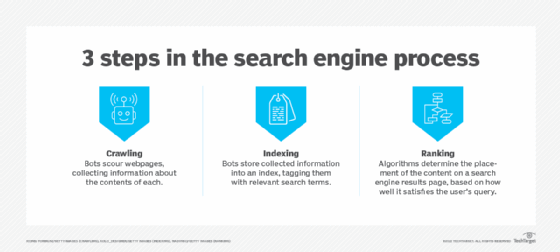pagination
What is pagination?
Pagination is the process of separating print or digital content into discrete pages. For print documents and some online content, pagination also refers to the automated process of adding consecutive numbers to identify the sequential order of pages.
In print media, pagination is used to divide a document into pages, usually for numbering them. The term can also refer to the physical process of creating individual pages by hand or with machinery.
In digital media, pagination involves dividing content into discrete pages, usually for navigation. For example, a blog might use pagination to divide up its posts into separate pages, each with a limited number of entries. Web applications also use pagination to divide lists of results into manageable chunks.
Other pagination use cases
In general, pagination is used whenever a body of content needs to be divided into separate pages, whether for printing or digital delivery. It is a simple and effective way to make large amounts of content more manageable and user-friendly.
Pagination is commonly used in reference works, such as dictionaries and encyclopedias, where each page typically contains a small amount of text. It is also used extensively in academic publishing, where each article or chapter in a book is often paginated separately. Newspaper articles are also paginated.
As mentioned previously, digital content is often paginated for similar reasons: to make it easier to navigate search engine results pages (SERPs) or read an e-book or whitepaper, for example. Online newspapers, digital publication and e-books are all examples of paginated content.
The benefit of pagination
The benefit of pagination lies in the fact that organizing long articles into multiple pages provides a better experience for the reader.
However, even relatively brief articles are often paginated so that a page consists of a single paragraph and a visitor might have to click through 10 or more pages to read the complete text.
The purpose is to increase page views and, as a result, ad impressions -- the number of times a website visitor sees a given ad. However, because most readers don't complete multipage articles, the presentation of multiple short pages rather than a single long one might result in fewer ad impressions.
It is also worth noting that search engines might penalize sites for excessively long paginated content.

Pagination best practices
Ideally, paginated content should be easy to navigate and understand. That means using numbers or other clear indicators to show readers their place in the article, as well as providing links to first, last and previous or next pages.
If an article is paginated for the sole purpose of increasing page views, that should be made clear to the reader. For example, a site might label a group of paginated pages as "Page 1 of 10," rather than just "1."
When using digital media to deliver content, it is important to design pagination in a way that makes sense for the medium. That might mean using infinite scroll or "load more" buttons for web content or providing readers with an estimated time to completion for longer articles.
Pagination can be an effective way to make large amounts of content more manageable and user-friendly. However, it should be used thoughtfully and sparingly; otherwise, it can become a hindrance rather than a help.
Check out our guide to enterprise content management and learn the ins and outs of enterprise document management.